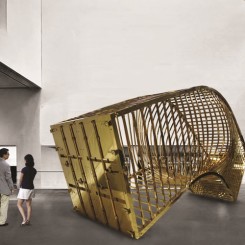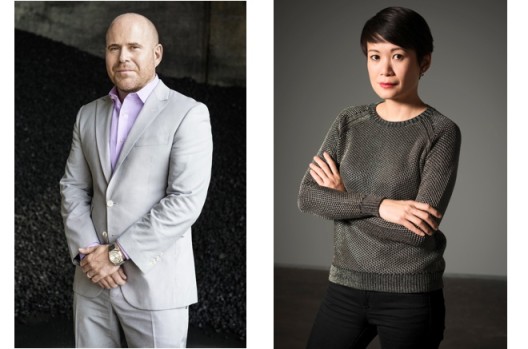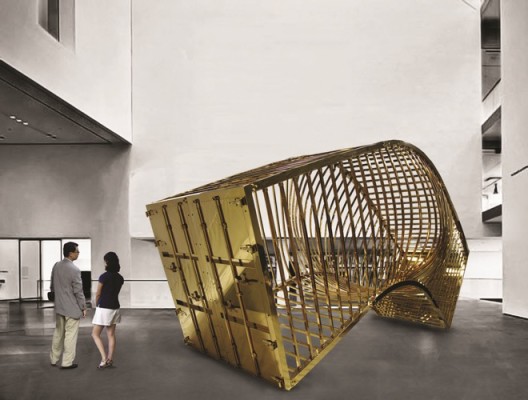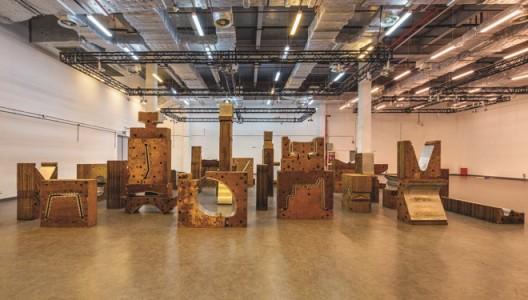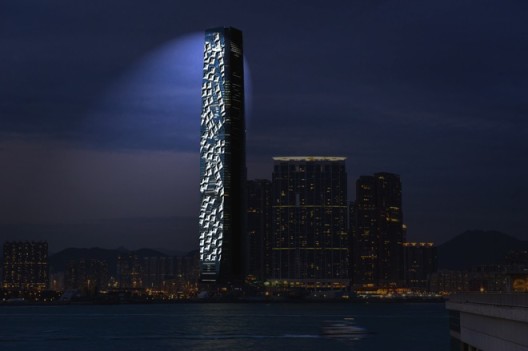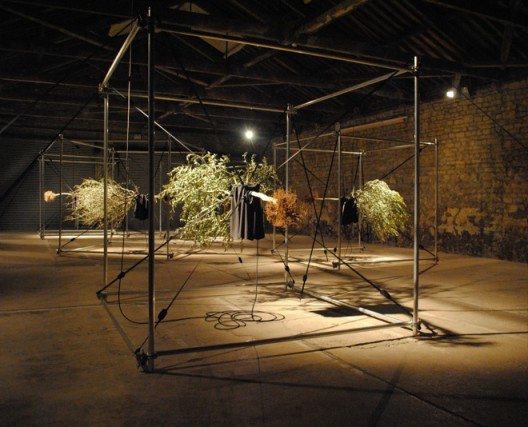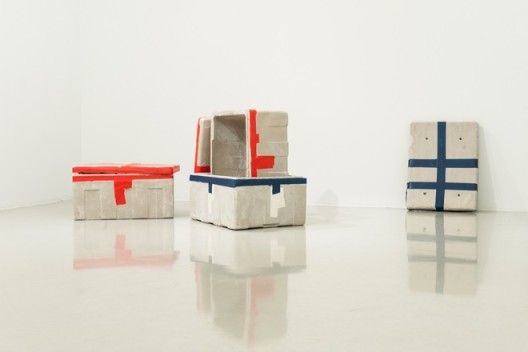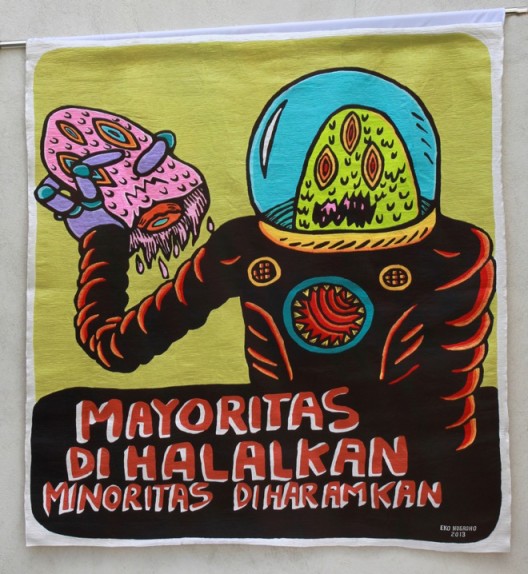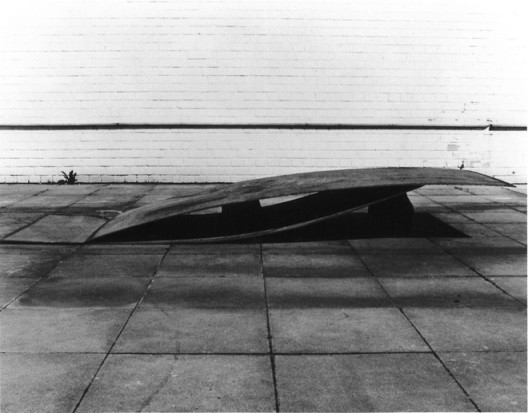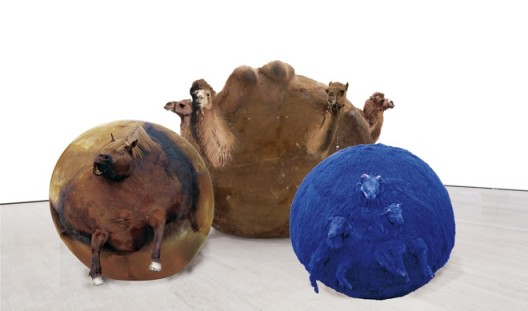Art Basel announced in late 2014 the appointment of Adeline Ooi as its Director Asia, including responsibility for developing Art Basel’s Hong Kong show. Oi’s appointment follows the departure of Magnus Renfrew, who co-founded ART HK before transitioning over to Art Basel with the latter’s purchase of the fair. Born in Malaysia, Ooi has long been involved with the art scene in Southeast Asia before working in VIP relations at Art Basel. With her background, Ooi can be expected to build bridges across regions in Asia and beyond.
Randian recently sat down with Marc Spiegler, the director of Art Basel, along with Adeline Ooi, in a wide-ranging conversation about the strategy and direction of Art Basel.
Daniel Szehin Ho (DH): There seem to be galleries from Europe and the US interested in Asia and the art markets here. How do you see the differences between Asian markets and those in the “West”? And what strategies does ABHK need to foster trust and knowledge between these distinct markets?
Mark Spiegler: The Eastern and the Western markets?
DH: Europe vs America vs Asia. Buyers and galleries.
MS: I think in all of these places, you have emerging collectors. Obviously in emerging markets you have a greater percentage of emerging collectors. Regardless of the galleries you are talking about, the fair has a validating function: a gallery in the Art Basel fair has gone through a stringent selection process, having been chosen by a jury of their peers.
Obviously in Asia, the challenge is different from Europe or America because the gallery system is relatively new here, and the auction system is so well established—but even here we’ve seen a lot of progress. When I think about the first time I came to Shanghai, which was in 2006, before I even worked for Art Basel, in comparison with today, I think today’s Chinese artists are much more likely to have a long-term relationship with galleries. What I also hear from galleries is that they feel a lot of collectors who used to work only with auction houses are gravitating towards working with galleries. I think they’ve understood it gives them a different kind of access; they can have a different kind of education, learning, knowledge, relationship.
I think this is a market that was defined by the auction houses, and hopefully won’t be only defined by auction houses in the future. I think if you see the strength of our show, you can see that we bring together a number of artworks and a number of collectors that no auction house does. In a sense, what we want to do for our galleries is what the auction houses do for their consigners, which is to produce the largest possible market—the difference is that what we’re trying to do is create long-term sustainable markets for the galleries and their programs, which feeds not only the hottest artists and their programs, but also the more experimental ones or the ones who are more of a “slow burn”.
DH: Is this about greater integration?
MS: It is! I use the “bridge” mechanism. On one hand, the big bridge we are building is between East and West. It’s about Western collectors discovering Asian artists and Asian collectors discovering Western artists. But it’s also—in such a heterogeneous scene, which I’ll let Adeline talk about in detail—it’s also about building bridges within Asia, which is why we wanted someone as our Asian Director who understood the complexity of the Asian scene.
Adeline Ooi: I think nowadays, if anything, it’s obvious that collectors know no geographical boundaries anymore. Traditionally, we could say Chinese only bought Chinese art, but I think it’s clear this is not happening anymore. I think the same thing could be applied to most of the Asian markets—in the sense that yes, there is a sense of loyalty and nationalism, but you just buy what you’re interested in, and what you can afford.
I think [galleries] are beginning to understand that programming is very important. They are becoming a lot more discerning about which gallery they work with, and why they should work with this gallery—and this all depends on which other artists they [the galleries] represent, and what kind of shows they are interested in.
MS: I think one of the things that’s very interesting about art fairs is that the extent to which they not only serve as the connecting mechanism between galleries and collectors from different parts of the world, but also between galleries from different parts of the world. It’s so common [to see] that, if you really examine an artist’s career, the step that took them outside of their continent or to a new country was their gallery being next to or across the aisle from a similar gallery, but from a completely different part of the world, and saying, “Hey, tell me about this artist?” or they may see them there and they meet. It’s this very cool thing. And again, as Adeline was saying —collectors knowing no boundaries—I think artists know no boundaries too. There are many examples of people who don’t even have a gallery in their home country, but who are represented in three or four different continents.
AO: It’s so true. I can give you a very specific example about collaboration. It’s a very heart-warming story in my eyes. Through the Hong Kong fair and eventually Art Basel, Silverlens Gallery from the Philippines got to know the other galleries that regularly show. It started from “I buy one piece of art from you” and all that, and eventually you find that they are working with these galleries, collaborating. So Silverlens is collaborating with Gallery Exit, with SCAI the Bathhouse, and also with another guy in Indonesia. So now you are doing these exchange programs: “I will send the best of my program to you, and you send your best to me.” That’s a really, really great example of camaraderie.
MS: It’s a very good example—among many—of something happening even within this region, which is immense.
AO: Back in the day, in 2007 or 2008, no one believed in sharing, but now I think it’s great that galleries understand that we can work together to expand our audience base—that there is enough pie to go around.
DH: So in the two years of Art Basel Hong Kong started, what kind of relationship are we seeing between Art Basel proper, the mothership in Switzerland, and Art Basel Hong Kong? Are we going to see more Asian galleries in Basel proper?
MS: We are! I think that at every level, it’s not just the West coming East, but the East going West. We have the Asian galleries—not just at Basel but also at Miami. For instance, Take Ninagawa was in Miami for the first time this year; Beijing Commune was in Miami for the first time this year; Hanart was in Basel in June; Aye Gallery was in Basel this June. We’re going to see more and more of that. Part of that is Asian galleries raising their game, and part of it is the selection committees of these fairs getting to know these galleries and artists better.
Without going into detail, I’ve been witness to some surprisingly detailed discussions about Asian artists with no Asian committee member in the room—people saying, “Yes, I saw this show and I saw that show, and no, this artist is better than that artist.” They’re learning. The thing about gallerists is that they are all voraciously curious about artists.
I remember when Franco Noero came to Basel in Hong Kong in 2012—as a visitor—and his eyes were ablaze. He said, “There was that ‘whoa’ at that purple carpet”—it wasn’t “Insights” yet but “Asia One”—and he said, “I don’t know if I like this art or not, but I know it’s something new.” I think this is what is so exciting to them.
So, long story short: as a result of this knowledge or this bridge, we are seeing more Asian artists. Xu Zhen, for example, had one of the signature works in “14 Rooms” and in “Art Unlimited” this year, and Haegue Yang had that huge piece at the entrance. I think people know these artists—they don’t think of them just as Asian artists, but as great artists. I think, likewise, the Asian galleries have as good a chance of getting into Basel as any Latin American gallery has of getting into Basel. That’s just going to increase over time.
DH: So are there greater strategic goals for Art Basel? Are you trying to be the main fair in different parts of the world? Are you trying to integrate the best of all worlds everywhere?
MS: Miami covers two continents; Basel covers Europe; Hong Kong covers Asia—but I think it goes beyond that. For example, you start to see us in the last year making inroads into education with the HKU SPACE Centre [an executive program on collecting art], into crowd funding with that Kickstarter project and working with young collectors with the Next program
I think Adeline joins us at a very interesting moment. We’re in a “Third Wave” of Art Basel’s development. The first wave was from 1970 to 1995, roughly. That was a period during which the fair was mostly a sales platform where buyers met sellers. This was the time when Alanna Heiss, who ran PS1, said that if she caught one of her curators at an art fair, she would fire them immediately. And then there was this period until a few years ago where Art Basel—and the other fairs following us—became more than just a sales platform; they really became a week-long event. This was when you see the addition of talks, performances, panels, parallel exhibitions, film programs, theater programs, etc. Also when you see a crowd of people coming, beyond just the buyers and sellers—museum curators and artists who want to get an overview of what’s going on, or biennial curators who want to do a truly global biennial and want to get clues to what’s going on and which galleries to talk to for funding those biennials. Especially in Miami, you see the broader creative class coming—film, music, design, fashion, etc.
Now in this “third phase,” I think we’ve moved out of this neutral platform; the sales platform was kind of a neutral position. And then with the event organizers, it’s kind of about the week. But now I think both because of the force we have—because we are present on four continents—and also because of some unsettling developments that we’ve seen within the art world, we feel like we can’t just expect the art world to be gallery-centric. We feel that we have to groom great collectors; we have to create great platforms for galleries.
DH: What developments are unsettling for you?
MS: I mean: the encroachment of the auction houses in the primary market; the encroachments of the auction houses into the secondary market at a much earlier stage in an artist’s career; the rapid and often quite destructive speculation around certain artists; the difficulties that some young galleries have faced in maintaining the momentum that they had.
Our fundamental belief—and this was part of Art Basel’s DNA from day one—is that Art Basel was a fair that was founded by gallerists. It wasn’t founded by a fair company or a magazine company. It was founded by gallerists. The fact is this: more often than not, the person who takes the first and biggest bet on an artist’s career is the gallery. But in order to do that, the gallery has to be in a position to do so. Art Basel is only as strong as the galleries are.
Even something like the Kickstarter project—which is about non-profits—also plays into this, because it is about making sure that these non-commercial spaces are still there, because these are the great testing grounds for artists to then become gallery artists—or, it’s a place where the artist does something that galleries can’t or wouldn’t support. This is a very broad thing, but we are in a sense at the beginning of a “third stage”, where we feel we have to have a more proactive role in the art world if we still want galleries to play a strong role for artists.
DH: Especially in Asia where the gallery system is pretty new, Art Basel could have an immense role…
MS: Let me tell you a story, which surprised me. Both in Basel and in Miami, there was always a strict injunction against auction-house-owned galleries being present at the fairs. This was something that has been permitted in Art HK, as a growth fair. We brought it to the committee. We expected the debate within the committee to be: the Europeans saying absolutely not, and the Asians saying you don’t get it, it’s different here. It was totally the reverse: the Europeans were saying, “Listen, we’re not going to tell you how you run your continent. If it has to be that way, then we’ll accept it,” and the Asians said, absolutely not; this must be a platform for galleries and not auction houses.It was thus very clear how the gallerists felt about it in Asia.
AO: I think also from the collectors’ standpoint, when we see a gallery having participated in Art Basel in Hong Kong—for collectors, it means these guys are legit and I would rather buy from them. There’s a certain standard and a certain amount of pride. They had to fight shoulder to shoulder with other galleries.
DH: So let me turn to Adeline: how do you see your strategy as the director of Art Basel Hong Kong? What goals would you like to achieve?
AO: In the long run? [Pause] A lot. [Laughs] Speaking as a fan of the Hong Kong fair and as someone who has also worked for Art Basel in general in the past two years, I really do believe in the quality. I would like that first and foremost to be the one thing we continue to uphold. It doesn’t just mean the quality of the show,but also the kind of exchanges we get from the galleries and the collectors. Marc might have mentioned that this year, with the March date, we’re getting a huge wave of collectors from the West who are coming to Hong Kong for the first time. I’m very keen to see how that is going to develop and I want them to keep coming back.
DH: Could you speak of your experiences in Southeast Asia?
AO: My experiences in Southeast Asia have just taught me that there is no “one” Asia. It has made me understand that huge differences are the one thing we all share. It doesn’t mean that once I’ve come in there are going to be more Southeast Asian galleries—you know that’s not going to happen; that depends on the Selections Committee. What I’ve learnt from my experience as a curator, as a writer and as an art adviser has taught me to talk to different groups of people who make up the art scene—to allow me to be able to communicate with them. I know the gallery scene very well—I’ve run a gallery before—and I know how collectors work. I think it’s about that sort of negotiation.
MS: Adeline makes a very good point about being able to speak to and understand the imperative of the different sectors of the art world that make up the fair. Sometimes ideas have just come out of nowhere, but usually the ideas for what has shaped the fair have come out of conversations. I think a big part of the job is to be in constant dialogue with collectors, with curators, with the institutions, with artists. You know, whenever someone complimented me on the fair, I’d say, “That’s great, but what really helps us are criticisms. So give us your criticisms. Tell us what you think is missing; tell us what you think we can do better.” So often, what starts as criticism then becomes constructive, then becomes an innovation.
MS: For what it’s worth, six or seven years ago, I was where Adeline was now—a new director—and I brought very little novelty in the first year. But within the first five years, we had redesigned the floor plans of both shows; bought a show in Asia; killed two sectors; redefined three sectors; and invented another three sectors. So things will happen—not to mention “Il Tempo del Postino” and “14 Rooms”, the work with Creative Time and the work with Performa…it’s a constant process.
The great thing when you have three fairs per year is that, if you have a good idea—Adeline might see something missing in Hong Kong, for example, we’ll say, “Hey, that’s going to be something we can work on for Basel”, and by the time it gets to Hong Kong, it’s been completely fine-tuned because it has been through two iterations.
DH: How independent are the decisions at Art Basel Hong Kong from Art Basel proper?
MS: We firmly recognize that there are many things that are regional and some things which are more universal. The idea is that long-term strategy is set by the Executive Committee, which Adeline is part of—this is made up of the directors. In terms of the day-to-day decisions involving all the aspects of the fair, Adeline could do with the support of the team who’s there.
There was a period where we had a relatively more centralized decision-making structure—that was necessary to make sure that all of the fairs were coherent in the way they needed to be coherent, but now that we’ve established that, we’re moving towards a model which will allow faster and more regional decision-making so that we can react quickly, and have the fairs perfectly attuned to the market they’re in.
DH: Are we ever going to see something like “Art Unlimited” in Hong Kong or “14 Rooms”?
MS: It’s a young fair. I would keep in mind that “Unlimited” didn’t come to Basel until its thirtieth year; “Unlimited” is only possible because we control the halls in Basel—we own those halls. It’s unimaginable unless someone gave us a 10 million dollar donation that we would be able to pull off Unlimited in Hong Kong because those halls are just so busy and the rents are so high per day. That’s a three-week process!
Is it possible that there will be more public art in Hong Kong? Absolutely. Is it possible that once M+ is open, things could happen there? With all due respect, Carsten Nicolai was one. If you can think of a larger artwork in the history of the art world, then let me know what it is, because I can’t. I mean, has there ever been a 484 meter-high artwork?
DH: No, not 484 meters high….Well, Land Art, but that’s different.
MS: Okay, when you can bring Michael Heizer here, let me know. [Laughs]
Obviously, every city is different and Hong Kong, because it’s a cosmopolis [sic] and not just a city, and because there isn’t a history of public art—it’s a much more complex thing. We do hope and plan over time to take the fair more and more outside the halls—because it’s important and because it’s expected of us. We’ve started to do that, with the ICC [International Commercial Centre], with the Film program. Give us some time. Also, quite frankly, our experience with the ICC is that in the first year, it was a real negotiation. Now they are eager to do it with us. There are other people who control major pieces of real estate in Hong Kong or major venues who want to do something with us. And then there’s the question of who’s going to pay for it. Is it the right project to start with? The more we become interwoven in the fabric of Hong Kong, the more that kind of thing will become possible, but it’s certainly our ambition to do huge projects.
DH: Is there a special project?
MS: Nothing we can talk about now. If it comes, it will come. We were extremely lucky to be able to pull off the ICC in Hong Kong, “14 Rooms” in Basel, and Ryan McNamara in Miami. We were lucky because these kinds of projects a) have to exist or at least be a glimmer in someone’s eyes, and b) you have to figure out the funding, the logistics, all that kind of stuff. It’s not fair to expect us to do something like that in three cities every year.
DH: At a certain point, are there parts of the art markets in Asia that cannot actually be in Art Basel? Due to its own inherent differences? In China, the obvious one would be “New Ink”.
MS: And yet we have people who are working on the borderline of “New Ink”. [pause] I wouldn’t rule anything out entirely. We don’t do Street Art in general, but there are artists like Barren McGee or JR who have been in the Art Basel fairs. We don’t do “New Ink” per se, but Hanart is doing a lot of work with calligraphy and so on—Johnson’s whole program this year is only ink, and that’s what he’s bringing to the Art Basel show in Hong Kong.
Will we do ethnographic art? No, as a rule, we don’t ethnographic art. Do we do Outsider Art? Not as a main focus, but we just had Henry Garger, for example, in Miami; and James Castle in Basel a few years ago. We won’t do art that we consider bad. Or we won’t do design art because we firmly believe in separating those markets—because we’re also partial owners of Design Miami. It’s hard to imagine a form that, taken up and appropriated in the right way by an artist, somehow or other, couldn’t be present in our fairs.
People always ask this question, “What is art?” I feel it’s a completely useless discussion. What’s interesting is when people ask “What is good art?” Good art is something that makes you see the world differently—it could be aesthetically differently, it could be politically differently, it could be conceptually differently. It could redefine your conceptions of love, war, or whatever it is—but the point is, that could take any aesthetic form, so I wouldn’t rule out what form good art could take. But it will be art that redefines us when we see it.
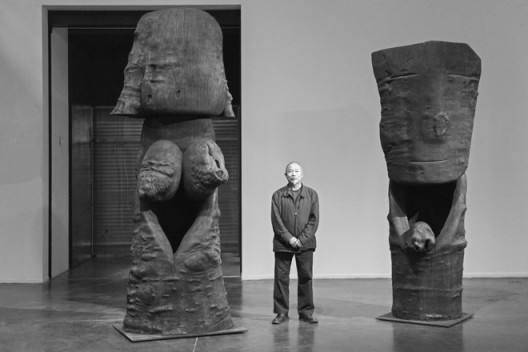
Wang Keping, “Les Spectateurs (Man and Woman)”, 1999, © Michel Lunardelli, courtesy of 10 Chancery Lane Gallery
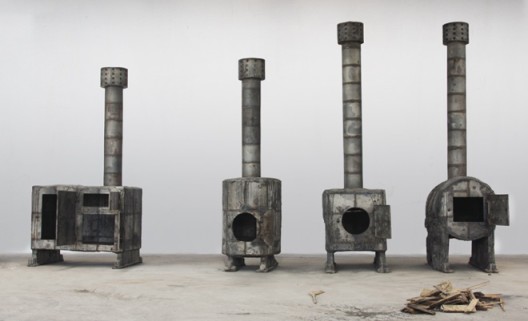
Sterling Ruby, “BLACK STOVES”, 2014, Photo by Robert Wedemeyer, courtesy Sterling Ruby Studio and Gagosian Gallery
[Thanks to Thomas Eller]

